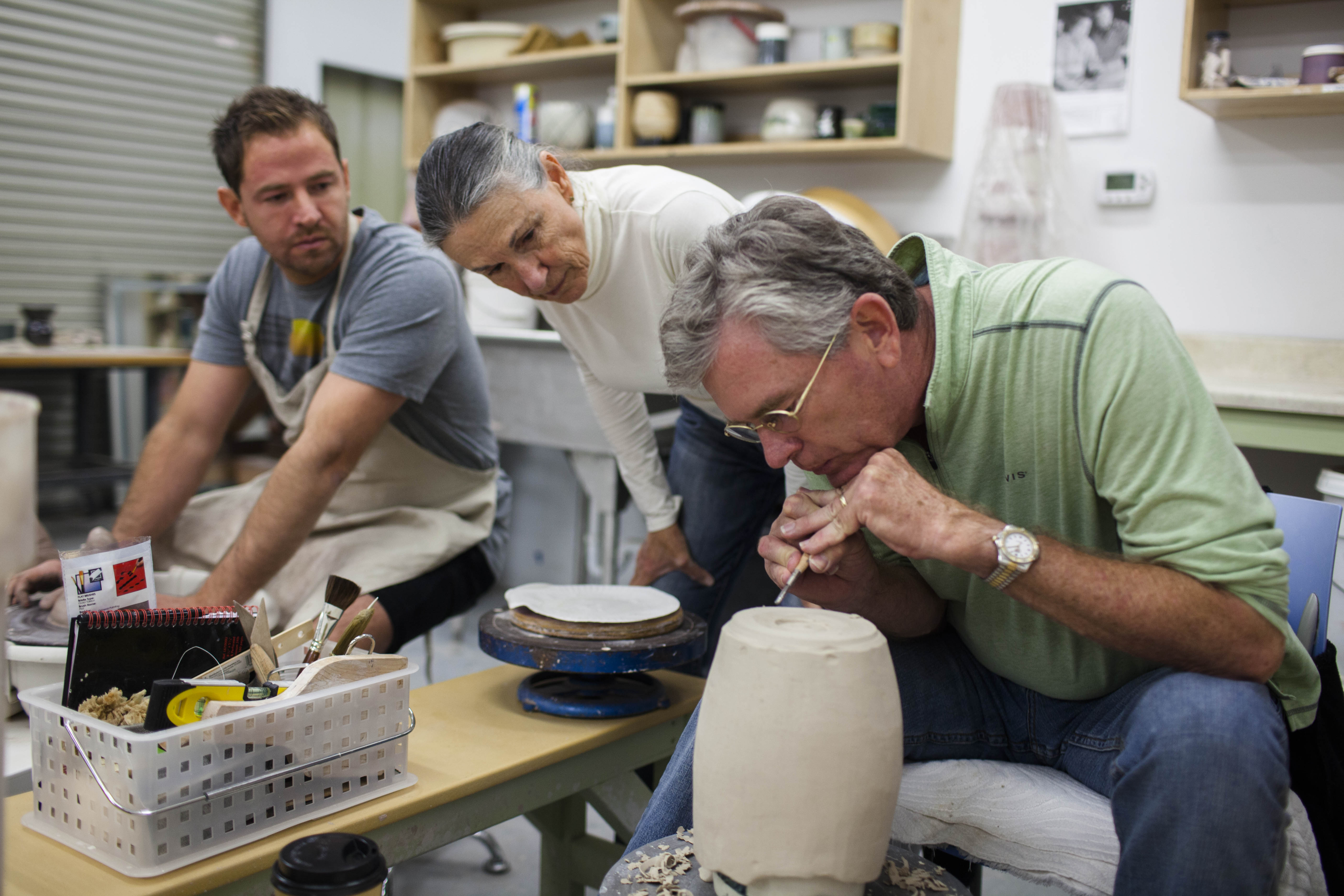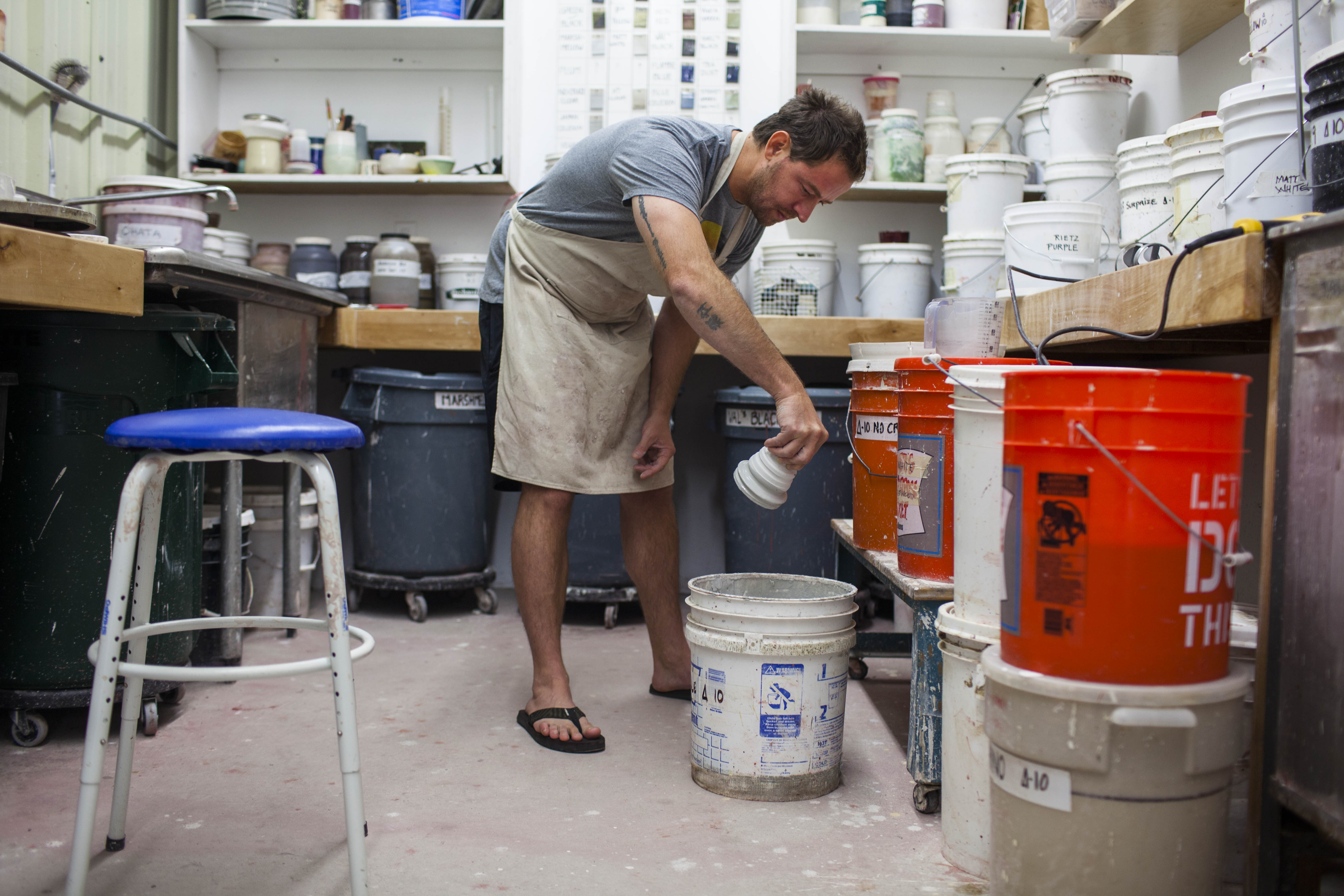A Shared Space for Ceramic Arts Opens
Professor and Student Open Clay Studios in Goleta

Drive to the back of the Goleta Habitat for Humanity ReStore, and you’ll find a tidy metal prefab that you might assume is for storage. Unless, of course, the door is propped open, giving you a glimpse of the ambitious vases and textured, abstract vessels inside.
This unassuming metal building is Clay Studios, owned by area ceramic artists Sheldon Kaganoff and Patrick Hall. It’s their shared workspace and the small, open studio where they provide one-on-one instruction and independent studio time to interested locals, from elementary schoolers (with their parents) to senior citizens.
Clay Studios began when Kaganoff, a retired UCSB professor of art, reached out to Hall, a former student, about building a shared ceramics studio. “We had that little space, two of us working, and we had more equipment than we’d ever use, so we started talking about sharing the facility with the community,” said Hall. Besides, Kaganoff added, “I missed the students. I was pretty invested in [teaching] for 33 years.”

Today, the studio has seven potter’s wheels, and enough space for about 10 people to work comfortably at one time. Kaganoff and Hall sit by students who are learning to shape bowls and vases, give lessons in glaze-mixing and firing, and provide grounding in everything from hand-building to sculpting to carving. “We have beginners, and we have people with a high level of technical skill,” said Hall. The two have different approaches to teaching: Hall, whose own ceramics focus on genre-bending size and unusual textures and shapes, is all about technique, while Kaganoff is more philosophical. (He’ll teach you to make a great bowl and then ask you how it figures into a larger ideal of “bowl-ness.”) But both are dedicated, patient teachers, and even the lumpiest beginner’s work is treated seriously as a work of art. “The beginner’s mind is a very special mind; it’s the mind of innocence,” Kaganoff said. Watching a new student improve is “very subtle and beautiful, and an expression of personal poetry, which is what excites me the most.”
Membership to the studio is paid by hourly fee: $125 for 10 hours. Potters buy clay directly from Kaganoff and Hall, at an above-market price that covers the cost of glazing and firing. The studio, clean and light-filled, has an ever-rotating supply of hand-mixed glazes in a separate room, a pug mill for clay recycling, and kilns custom-built by Ken Yokota, a sculpture technician for UCSB’s Department of Art.
“I think being an artist is kind of self-indulgent at its core, so balancing that out by helping others feels like it kind of closes the circle,” Hall said. “We’re at our best when we’re in community with each other, and not living on an island.” That may be true, but there’s no doubt that Clay Studios — quiet, bright, and full of possibilities — feels like an island unto itself.



